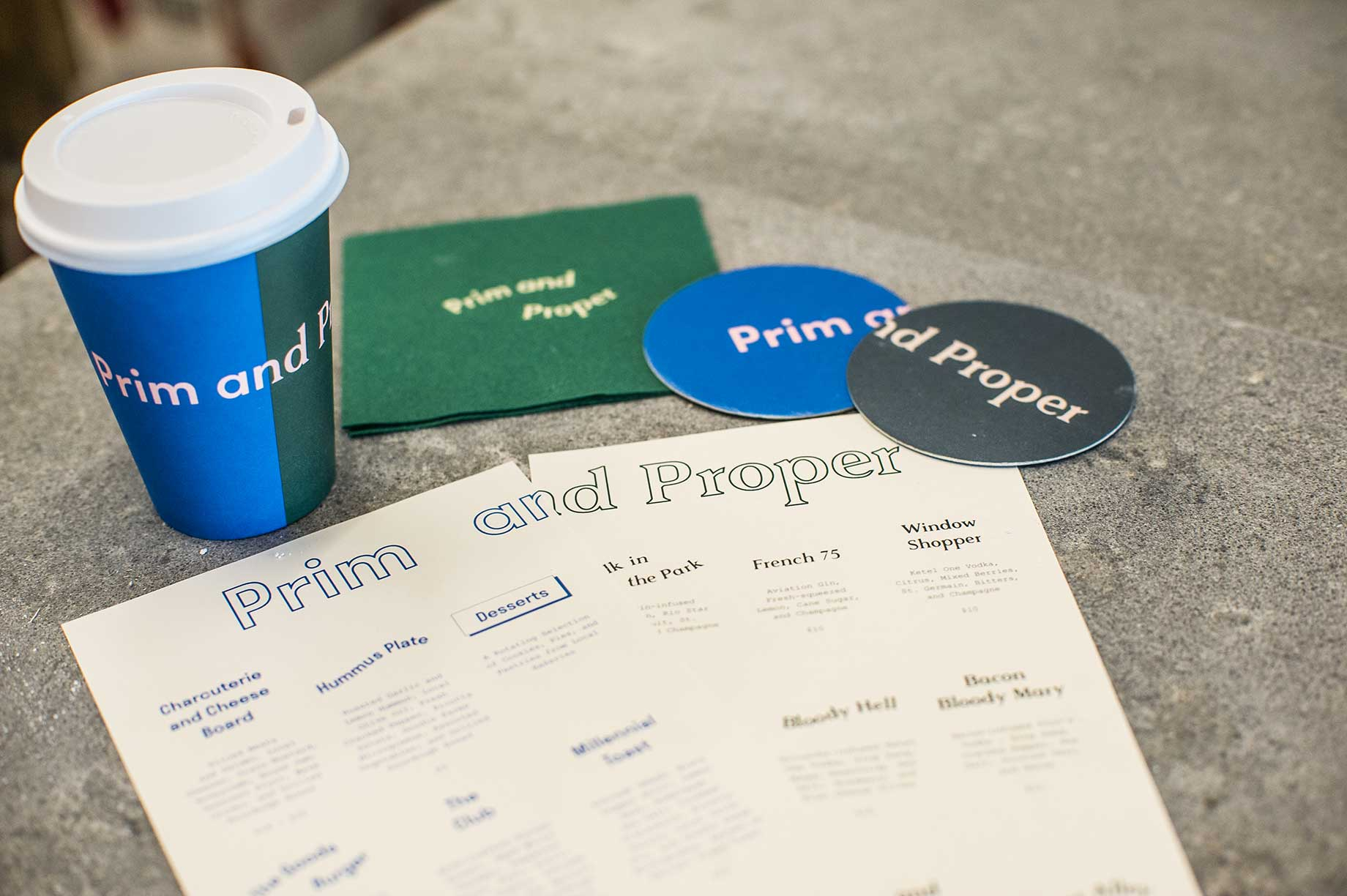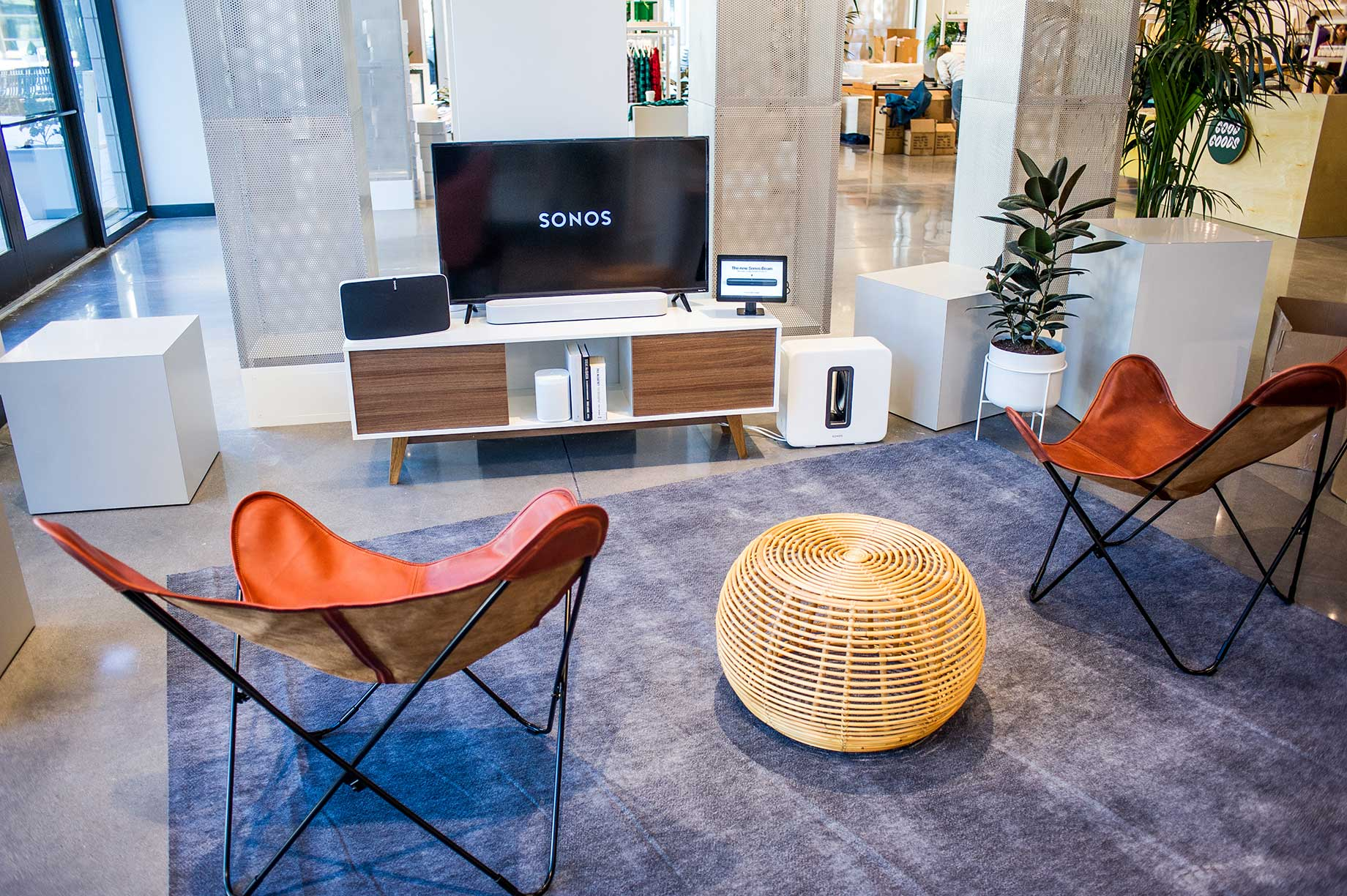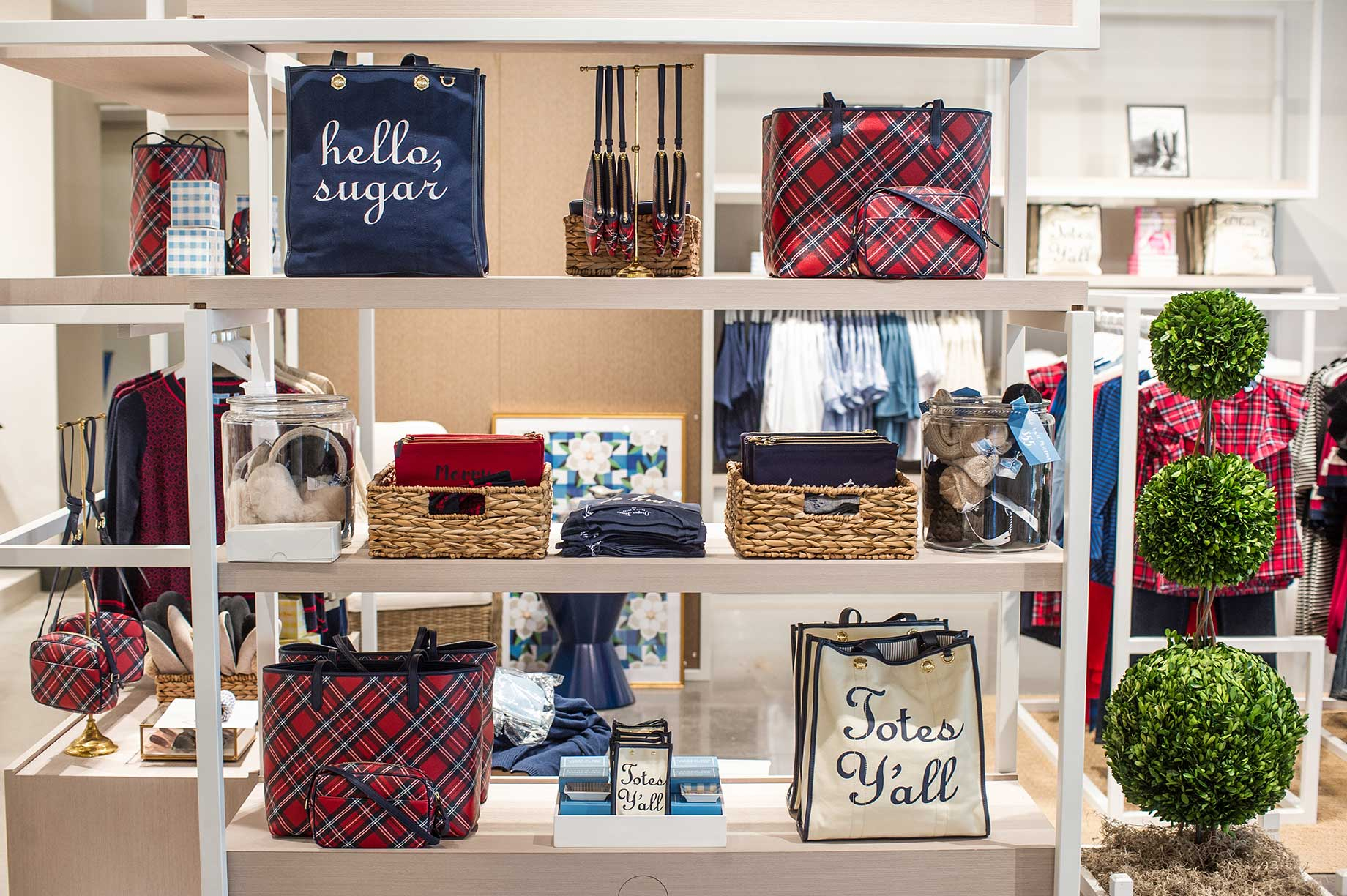It is not only the customers who get pampered at Neighborhood Goods, a contemporary, high-tech department store — the brands sold there are, too.
The first Neighborhood Goods store opened last November in a 14,000-square-foot space at Legacy West, a mixed-use district in Plano, Texas. It features a rotating array of about 35 brands that each occupy their own spaces. Among the first that took space there were Allswell (a bedding retailer), Draper James (apparel), MeUndies (underwear), Primary (children’s apparel) and Stadium Goods (sneakers).
One permanent feature, though, is a bar and café offering high-quality food, drinks and a place where customers can hang out and browse the merchandise.

Customers are encouraged to linger with top-shelf cocktails and food
But a main menu item is the customers themselves: Some 30 cameras throughout the store gather information on the shoppers, including their age, sex, where they go, how long they linger at each display and what percentage of them actually buy. This raw data — not including the identity of customers, which is not gathered — is then provided to the brands.
“We are essentially a tool set for brands,” said Neighborhood Goods CEO and co-founder Matt Alexander. He was interviewed by James Cook, JLL’s director of retail research for the Americas and the host of the Where We Buy series, broadcast live from December’s ICSC New York Deal Making.

Neighborhood Goods pampers its brands as much as its shoppers
“For brands, it allows for us to capture a huge amount of anecdotal information and general insight as to what is and isn’t working,” Alexander said. “For a lot of the brands working with us, it’s not an exercise in sales, but much more in informing their broader strategy and A/B testing new ideas — and even testing new product types and things of that nature, and so the data in many respects becomes the key.”
Neighborhood Goods is looking to open in markets that are growing but do not yet offer the range of merchandise that might be available in such built-out places as Dallas or New York City, says Alexander. Plano, about 20 miles north of Dallas, is a rapidly growing community that has attracted a variety of large corporations, including Toyota, which has its North American headquarters there. Alexander says he hopes to open about five Neighborhood Goods stores this year and 10 next year.

Some brands pay Neighborhood Goods a fixed fee for their space and lease time, while others share a portion of their sales revenues
Brands pay Neighborhood Goods either a fixed amount according to the space they occupy and the length of their lease or else pay a smaller base fee plus a portion of sales. Another model allows brands to pay to be on display in various places throughout the space, though not necessarily sold.
By Edmund Mander
Director, Editor-In-Chief/SCT


